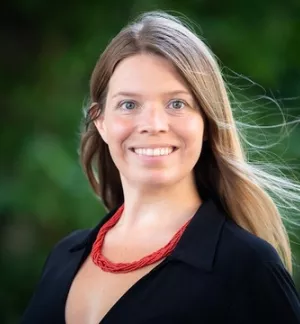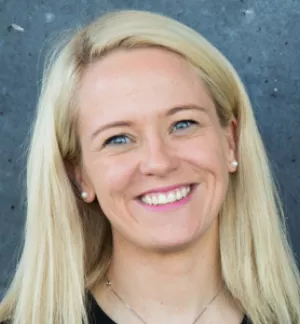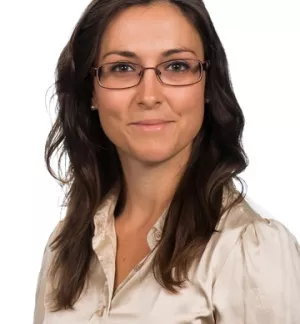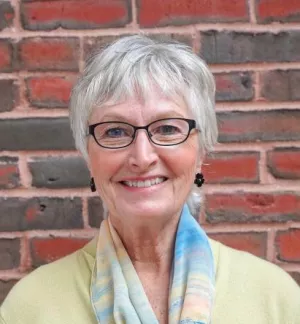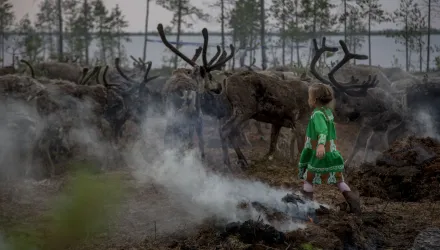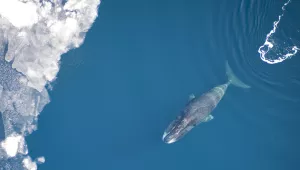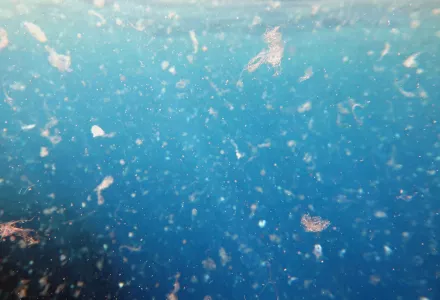
Introduction
October 2019 Workshop on Policy and Action on Plastic in the Arctic Ocean
The Belfer Center’s Arctic Initiative and the Wilson Center’s Polar Institute co-hosted a workshop with the Icelandic Chairmanship of the Arctic Council at Harvard Kennedy School entitled "Policy and Action on Plastic in the Arctic Ocean." The event convened global thought leaders, diverse stakeholders, and subject matter experts to begin developing a framework for tackling Arctic marine plastic pollution as one of the focus areas for the Icelandic Chairmanship.
Is Arctic marine plastic pollution a problem?
The workshop revealed the massive scale of plastic consumption that exists, with approximately 8.3 billion metric tons of plastic being cumulatively produced as of 2017. There has been rapid growth in plastic production in recent years, with half of all plastic having been produced in just the last 13 years, and 34 billion metric tons of plastic expected to be produced by 2050. Litter is found across the Arctic marine environment including shoreline, sea ice, sea surface and subsurface waters, water column, seafloor and sediments, and in the food chain. An estimated 8 million metric tons of plastic enters the ocean worldwide every year, though only 1% of it has been accounted for. This raises the question, where is all the plastic in the ocean?
Different categories of plastic debris include: macroplastics, mesoplastics, microplastics, and nanoplastics. These different types of debris present challenges to a comprehensive understanding of the plastic pollution issue because they disperse differently in the environment and in some cases have completely different trajectories, requiring different methodologies to study them effectively.
A lack of consensus on definitions of plastic marine debris categories constitutes a second challenge to consistency across the field, making a common vocabulary and shared definitions beneficial, especially for clarity of comparative research. Despite gaps in knowledge about occurrence, sources, transport, and the spectrum of impacts of plastic in the environment, we know enough that the plastic pollution problem is serious, and that we must seize opportunities to address it.
Where does the plastic come from?
Plastic debris of all sizes comes from sea-based activities, land-based activities, riverine deposition, and through atmospheric transport. Sea-based activities, particularly commercial fishing, generate large quantities of plastic debris in the Arctic marine environment, especially ghost gear (lost or discarded fishing gear). Other known sea-based sources include aquaculture, shipping, the oil and gas sectors, and ocean transport of debris from outside the Arctic. Land-based sources of debris come from tourism, extractive industries, inadequate water treatment plants (particularly microplastics), lack of treatment plants, and poor landfill management. There has also been documentation of atmospheric deposition of small particles across vast distances. Significant inputs of plastic debris enter the Kara and Laptev Seas, which demonstrate the role of rivers as pathways for litter, currently estimated to be about 2 million tons each year.
Research Recommendations
The problem of plastic pollution in the Arctic is sufficiently understood to know it poses a risk to marine ecosystems. However, there are daunting gaps in knowledge of the abundance and distribution of Arctic marine plastic from these different sources. These gaps can make it more challenging to assess how to best target interventions. To fill these gaps there is a need for:
- development of harmonized protocols and standardization of data to measure trends over time in a consistent way that is conducive to data sharing;
- consistent monitoring throughout the year to account for seasonal fluctuations;
- establishment of baselines from which to measure progress;
- better data collection from certain parts of the Arctic Ocean region, particularly the Central Arctic Ocean and coastal areas in Siberia, Arctic Alaska, and Canada;
- increased sampling of snow on ice floes to improve estimates of atmospheric transport of litter;
- seafloor sediment monitoring, since plastics of all sizes accumulate there;
- identification of “hot spots”—areas of acute contamination with greatest risk to wildlife and the marine ecosystem;
- improved use of satellite imagery to assess where ice forms and how it moves, thereby providing information about where ice picks up microplastics;
- further initiatives to develop remote sensing for detecting large debris at sea, as well as sensors to detect plastics in the water column that could be installed opportunistically on vessels; and
- increased collaboration between Arctic communities and scientists in community monitoring of plastic pollution.
All those involved—scientists, politicians, industry leaders, communities, Indigenous peoples, non-governmental organizations, and other stakeholders—should co-create solutions to the Arctic marine plastic pollution problem within the context most appropriate for the given circumstances. Prioritizing actions that can inform understanding about significant sources of plastic pollution emissions, and allow for monitoring and assessment of policy interventions, may prove the most impactful given limited resources.
Learning from Other Regional Plans
The OSPAR Regional Action Plan and the Caribbean Regional Action Plan offer models from which a Regional Action Plan for the Arctic can benefit.
The OSPAR Plan combines national actions, recommendations, and 32 collective actions. Its success derives from relatively good data on pollution sources and a commitment to measuring the effects of interventions, which promotes engagement with sectors that are contributing to pollution issues.
Implementation of the Caribbean Plan demonstrates that such plans are only as effective as local implementation capability and that communities must have buy-in from the beginning. Those developing the regional plan must communicate clearly with affected communities about the relevance of the marine plastic pollution problem and seek their engagement in building solutions.
An Arctic Regional Action Plan to address plastic pollution should draw from the harmonized approach for marine litter monitoring modeled by OSPAR; focusing on science that can establish a baseline of current plastic pollution, and a foundation for collaborative science to enable effective plastic pollution monitoring and intervention assessment going forward. Like the Caribbean Plan, local knowledge must be integrated and communities should be recognized as integral parts of the intervention solution. Recognizing that plastic pollution is a major transboundary concern within the region, a plan should endeavor to couple unique approaches that work locally with collaborative monitoring and collective action.
Innovation and Working with Industry
As with many challenges, prevention is key. It is significantly easier and more cost-effective to prevent plastic from entering the environment than it is to clean it up. Partnering with industry and innovators to prevent plastic from polluting the environment, to encourage the reuse of already existing plastic materials, to reduce raw plastic consumption, and to ensure better recyclability of new plastics products could begin to stem the flow of plastics into the environment. At the October workshop presenters highlighted several promising partnerships and technologies toward that goal.
The Icelandic Recycling Fund (IRF) has found success in using financial incentives to increase the proper disposal of waste, including the explicit funding of collection and recycling. The incentive is funded through a recycling fee on products for producers and importers, which is a model that could be scaled up or applied to other places in the Arctic. Through the IRF partnership with the fishing industry, fishermen can return gear (such as nets and ropes) to waste collection points without paying a fee. IRF then works with technology partners to recycle the gear they collect. In order to build engagement from fishermen, IRF has found it beneficial to communicate the risks that plastic pollution poses to the health of fisheries upon which their livelihoods depend. This collaboration is a promising public/private partnership addressing one of the significant sources of sea-based plastic pollution in the Arctic.
Plastix, a Danish company, uses a circular economy model through increasing the recyclability of plastic-based products like fishing nets. Plastix has overcome the challenge of recycling products that contain different polymers through a process that breaks the products down into raw materials that can be turned into new products. This is an example of a method that helps to keep manufactured plastics in the value chain and out of the waste stream.
Cruise industry partnerships with local governments can leverage each other’s strengths. For example, the Association of Arctic Expedition Cruise Operators (AECO) has established a Clean Seas Project, which focuses on dramatically reducing single-use plastics onboard expedition cruise vessels, while educating and motivating passengers and crew to better understand the negative impacts of plastic pollution on the sensitive Arctic marine environment. AECO brings tourists to the Svalbard area who contribute to debris removal efforts, while the Svalbard government retrieves the aggregated waste that is collected so the cruise ship does not incur costs of disposal. This is an example of how opportunistic trips to the Arctic could be systematically leveraged to assist in debris recovery and removal, while addressing a potential source for marine pollution through education and intentional reduction of single-use plastics consumption.
Rhizoform, LLC is a bio-materials startup company that has developed a mycelium-based packaging product substituts for polystyrene to insulate shipments of fish, as well to insulate houses. This, and other bio-based materials, offer fully biodegradable alternatives to plastic that could both decrease the demand for new plastic as well as limit the amount of plastic that Arctic communities have to process through waste management facilities or as waste to be retrieved from the environment.
Drawing on innovators and industry to be part of the solution to the plastic pollution problem offers a valuable multi-sector approach.
Policy Recommendations
The Arctic region is too diverse for a single set of solutions to the marine plastic pollution problem. The Arctic Regional Action Plan should allow for subregional and local efforts and communications campaigns tailored to specific needs and capabilities. Local communities must co-develop these efforts with incorporation of indigenous knowledge where relevant. A Hackathon model could be used to gather interested community members with partners to innovate and problem solve collectively. Increased investment in innovative solutions that come from Arctic residents to address the reduction, reuse, recycling, and recovery of plastics could provide opportunities for regional leadership on this issue.
Keeping the importance of the local perspective in mind, the Arctic Regional Action Plan can usefully employ the following strategies:
- Promote awareness and understanding of the plastic pollution issue through targeted communication and education efforts to increase community engagement and solutions co-creation.
- Convene industry to educate about economic and environmental threats from plastic pollution and to generate reasonable and realistic practices for plastic pollution mitigation.
- Work with industry to develop and promote guidelines that reduce plastic waste and address appropriate disposal, recycling, and reuse of plastic materials.
- Based on those guidelines, implement measures to reduce plastic pollution from ships in the Arctic Ocean and adjacent seas, particularly lost and abandoned gear from fishing vessels and plastic waste from transport and tourist vessels.
- Share information about promising projects already happening in the Arctic region to enable those efforts to be scaled up.
- Provide incentives for cross-sector collaboration to promote synergy between different actors addressing the plastic pollution problem.
- Encourage more producer responsibility to account for management of environmental costs associated with a product throughout its life cycle, and decrease the use of plastics that cannot be recycled.
- Promote financial incentives to identify alternative packaging products, by using industry challenges, similar to the Defense Advanced Research Project Agency (DARPA) Grand Challenge.
- Identify and fund research priorities to identify major contributors to the waste stream and to measure impact of reduction strategies.
- Enable researchers to coordinate, share data, and learn from each other.
- Work with the Arctic Economic Council to develop an innovation fund and to encourage circular economy model development from production of raw materials to reclamation and reintegration of spent materials into new products.
Appendix 1: Plastic Pollution Case Studies
From the Globe
Lessons Learned Developing a Regional Action Plan to Reduce Plastic Pollution: Caribbean Environment Program Regional Action Plan for Marine Litter (RAPMaLi)
By Brittany Janis
Like the Arctic, the Caribbean is home to an abundance of natural assets. The waters of the Caribbean help provide food and income for those who live in the region, and the pristine beaches and biodiverse rich ecosystems attract tourists which account for an estimated 19% of the regional economy.1 Maintaining marine ecosystems is important for the health of the people and economy of the Caribbean, making pollution prevention and waste management a critical issue in most Caribbean States.
According to the United Nations Environment Programme (UNEP), “seventy to eighty-five percent of marine litter in the Caribbean Sea comes from land, and most of it consists of plastics. Together with agrochemical run-off and domestic wastewater, it is one of three priority pollutants for the wider Caribbean region.”2 In 2008, the first Regional Action Plan for Marine Litter (RAPMaLi ) for the Wider Caribbean Region (WCR) was developed as a project under the directive of the United Nations Environment Programme (through its Regional Seas Program) in response to growing global concerns of litter accumulation in the Caribbean marine environment. This Action Plan was developed within the framework of the 1986 Cartagena Convention for the Protection and Development of the Marine Environment of the Wider Caribbean Region and the Protocol on Land-Based Sources of Marine Pollution which became legally binding in 2010. The RAPMaLi provided a comprehensive toolkit to assist countries of the WCR and in particular small island developing States (SIDS) to incorporate best practices in solid waste management. It was designed to addresses the complex and interconnected nature of the marine litter problem and outlined actions at the National and Regional Level within five thematic areas:
- Legislation, policies and enforcement
- Institutional framework and stakeholder engagement
- Monitoring programs and research
- Education and outreach
- Solid waste management strategies3
Key to this effort was a focus on a regional approach, which promoted problem solving at the national and local levels, recognizing that unique regional characteristics shape the kind of solutions that are most effective in a given community and that pollution was a major transboundary concern for countries in the WCR. A series of pilot projects in places like Guyana, Barbados and Saint Lucia allowed tactics outlined in the plan including monitoring, governance, communication, capacity building & training to be developed and tested in local communities. The Caribbean is not uniform in cultural identity so finding unique approaches that work locally was key to enabling uptake. A testament to the success of this approach was evidenced in the increased level in participation of 20 countries in 2014, when the RAPMaLi was updated, from 14 countries included in the original report.4
When updating RAPMaLi, the program relied on a variety of partners to assess the progress that had been made, and revisions necessary to existing recommendations. The Caribbean Youth Environment Network (CYEN) compiled data and conducted surveys and interviews with government representatives, non-governmental organizations and regional organizations involved in marine litter monitoring and management. Critical to the development of the RAPMaLi was the understanding of the broad ecosystem of regulations, protocol, partnerships and players who were active in the marine conservation space. The 2014 RAPMaLi update mapped “new or amended institutional, legal and policy arrangements for the management of marine litter at all levels, national legislation and policies; identification of government, quasi government agencies and NGO’s that work with national marine litter problems; and existing national and regional monitoring programs on marine litter.”5 The update also enabled the plan to highlight a growing concern in the region, microplastics, that had been absent from the 2008 version.
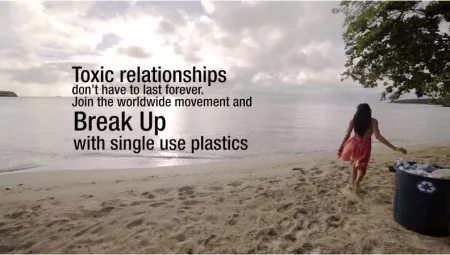
Working through existing partnerships like the Global Partnership on Marine Litter, a voluntary open-ended partnership for international agencies, governments, businesses, academia, local authorities and non-governmental organizations hosted by UNEP,6 through its Global Programme of Action to address pollution from land-based sources and activities, the RAPMaLi was able to be pull from a variety of lessons learned in finding innovative solutions for the marine litter problem. Asking local people for feedback insured the plan was continuing to build on the diverse voices of the Caribbean. It also helped in the development of targeted education campaigns that focused on messaging that resonates with local communities.
In February 2017, UNEP launched the Clean Seas campaign to engage governments, the public, civil society and the private sector in the fight against marine plastic litter, with a focus on reducing the production and consumption
of non-recoverable and single-use plastics. By April 2019 nine Caribbean governments7 has signed onto that agreement. With that new initiative, on top of many other successful campaigns to combat plastic pollution happening in the region, The Cartagena Convention Secretariat/Caribbean Environment Program is finalizing a third revision of RAPMaLi, which will result in an implementation strategy, regional and national priority actions, targets and indicators that will form the basis for new national and regional projects. The following four strategic areas of focus have been identified:
- Research and monitoring
- Governance
- Communication
- Capacity building and training
Activities under research and monitoring and building on the experiences of the OSPAR Commission has resulted in the development of a harmonized approach for marine litter monitoring that will form the basis for more informed policy and decision-making.
At the Policy and Action on Plastics in the Arctic Ocean Workshop, hosted at the Harvard Kennedy School in October to 2019, Chris Corbin, Senior Programme Officer with the Ecosystems Division of the United Nations Environment Programme (UNEP), emphasized the need to coordinate among global efforts, while continuing to ensure that the challenge of plastic pollution in the marine environment maintains a local focus, and becomes a local issue, despite it’s global implications.
When thinking about developing a Regional Action Plan for the Arctic, Corbin emphasized the importance of taking into account the many different communities, languages, and local contexts of the Arctic in order to provide a plan that can be relevant, and still aspirational. He explained, “The goal of the regional body is to bridge the gap between global tools and resources and local communities."
A Reusable Solution to Reducing Plastic Packaging Waste: Algramo— A Private Sector Solution for a Circular Economy
By Brittany Janis
Jose Manuel Moller grew up in Chile to parents that believed in giving back to their community. His parents founded a kindergarten for children from underprivileged families, and as a child José Manuel and his siblings volunteered in the social service programs his parents founded. This drive to give back followed him to college at Pontificia Universidad Católica de Chile (Catholic University of Chile), where he founded a student group, InvolUCrate (Get Yourself Involved), which helped improve the conditions of workers at the university and promoted the study of social innovation in the business school.8
While in college, José Manuel began working on poverty in Chile. He wanted to work side by side with the poorest families in the country, to help them find solutions to poverty and gain access to necessities. With three of his college friends he moved to one of the poorest areas in Santiago, located in the peri-urban community of La Granja, and began living like those around him, trying to understand what was keeping people in poverty. La Granja, like many low-income communities, faced serious environmental justice concerns because of insufficient waste management which led to pollution.
José Manuel oversaw cooking for his household, and quickly realized there was what he termed a poverty tax on basic essentials. Living on a limited budget like his neighbors, he was forced to buy products in smaller portions, but these smaller portions came at a premium price. He and his neighbors were excluded from economies of scale because low liquidity meant they couldn’t afford the slightly higher price tag of bulk items, even though there were more affordable per gram. This meant not only higher prices for these communities that could not afford them, but also more waste and pollution in those same neighborhoods, since the smaller portions of products came in small plastic satchels, which could be seen littering the streets. This realization led him to design Algramo.
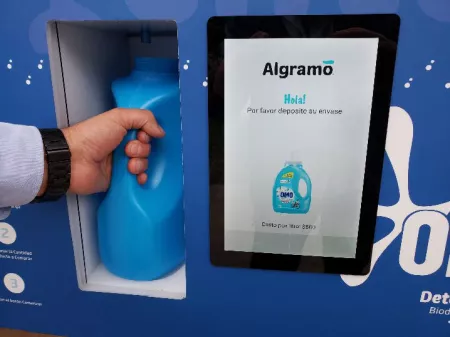
Algramo, which translates to “by the gram” is a company that distributes both refillable returnable bottles and vending machines full of bulk staples which offer products in small quantities in reusable containers across a network stores. Brian Bauer, who works on the circular economy and strategic alliances at Algramo, explained, “When you buy in small formats, you pay from 30% to 50% more for the product, depending on what the product is, and then in doing that, you also produce a lot of packaging waste. That’s typically the type of packaging waste that’s most likely to escape into the environment because it’s smaller format, and it’s also in low-resource areas where there aren’t very good waste management systems in place. So there’s a lot of that packaging that ends up in the environment, ultimately, in oceans or other places it shouldn’t be.”9
Algramo has grown rapidly since its founding in 2013. It operates in over 2,000 family owned stores that reach over 325,000 end-customers in Santiago de Chile.10 Their business model has attracted the attention of a number of large brands, including Unilever and Nestlé, which are currently partnering with Algramo to pilot a mobile dispensing system that uses electric tricycles to deliver products. They are now looking to expand their operations into new markets.
Key to the design of the company model is the idea of reuse. Algramo’s smart packaging, equipped with RFID chips, which encourages consumers to reuse the plastic packaging by offering a discount. Each time a customer refills their existing container or bottle with product, they earn credit that can be applied to future purchases. The more the packaging is used, the more value it accrues. Once the containers reach the end of their life, they can be traded in by shoppers for a new container — this deposit ensures packaging goes back to Algramo, for recycling at end of life.
Algramo is currently experimenting with what threshold of discount is necessary to attract a wider range of consumers and has landed on 30%. Brands who partner with Algramo can meet these numbers, because they also benefit from reduced packaging costs and optimized logistics, since they can focus on distribution of concentrates and bulk goods, rather than lots of little bottles or bags. For Arctic communities where shipping costs are a significant portion of an items expense, a similar bulk vending solution could be attractive to both brands, distributors and consumers.
Reuse rates by customers have risen from around 10% when Algramo began to more than 80% now.11 By decoupling consumption from packaging waste, Algramo has created less pollution. Particularly for communities with expensive or insufficient waste management this kind of solution stops the problem at its source— single-use plastic waste. This also gives communities with low liquidity easier access to bulk products since families can buy the exact quantity of products they need with bulk prices. As Algramo expands with new investments, it offers the opportunity for a win-win-win solution, more affordable products for consumers, reduced packaging and distribution costs for companies, and less plastic pollution going into the environment.
From the Arctic
Managing Plastic Waste from Fisheries: The Icelandic Recycling Fund
By Katie Segal
Nearly 80 percent of all the plastic ever produced worldwide is sitting in landfills or polluting the environment, and only nine percent has been recycled.12 With plastic production projected to increase substantially over the coming decades, it is crucial for governments to implement policy that stems the flow of plastic waste and better manage disposal. Iceland has set a global example for managing plastic pollution through the Icelandic Recycling Fund, which aims to increase the proper disposal of waste through a fee-based system. In October 2019, Olafur Kjartansson, managing director of the Icelandic Recycling Fund, visited Harvard Kennedy School to participate in a workshop titled “Policy and Action on Plastic in the Arctic Ocean.” Mr. Kjartansson highlighted how the Fund is maintained as well as its progress and challenges in reducing discarded fishing gear, a major contributor to marine plastic pollution.
The Fund’s goal is to provide a financial incentive to increase waste collection and proper disposal. Producers and importers of specified products are subject to a fee, and the Fund uses revenue from the fee to cover the costs of environmentally responsible waste collection, disposal, and recycling. A wide variety of waste categories are covered, from packaging waste to used tires.13 The Fund is a governmental organization operating under the Iceland’s Ministry for the Environment and Natural Resources but maintains a board of directors with representatives from other stakeholder groups, including industry and municipal governments. It was established in 2003 after conversation between the Icelandic government and waste-producing industries and stakeholders.
In Iceland and around the world, fishing gear constitutes a significant portion of plastic debris, which often ends up contaminating the marine environment. Approximately ten percent of global marine plastic pollution comes from “ghost gear,” or discarded fishing equipment, according to a report from UNEP and FAO.14 Iceland’s economy depends on healthy marine fisheries and a strong fishing industry, with over 1.3 million tons of catch from the Icelandic fishing fleet in 2018, and an estimated 1,300+ tons of fishing nets. When developing the Icelandic Recycling Fund’s approach to tackling fishing gear, Iceland engaged in discussions with Fisheries Iceland and local producers of fishing nets, so that the policy could incorporate the needs of these critical stakeholders. The owners of fishing trawlers were willing to claim responsibility for used fishing nets and ensure proper disposal. Mr. Kjartansson sees this as a positive arrangement because experts onboard the boats are familiar with handling such nets, and therefore can manage nets more efficiently than a third-party waste management company. The Icelandic Recycling Fund maintains a voluntary agreement with the fishing industry, allowing them to return gear (such as nets and ropes) to waste collection points without a fee.15 The fund then works with technology partners to recycle the gear.
Mr. Kjartansson noted some indicators of the Icelandic Recycling Fund’s success in reducing the amount of fishing gear lost at sea. First, he cited an increased awareness of the importance of handling nets properly among fishing companies. Second, the Fisheries Iceland mentions their system of fishing net collection in their environmental declaration, indicating that the association’s members—and other fishing industry stakeholders—see the benefits of collecting nets. Fishing gear is expensive, so cost is a major factor motivating companies to prevent loss of fishing gear.
While collecting nets is critical for preventing pollution of the marine environment, it unfortunately does not guarantee that the nets can be recycled once they have reached land. Materials used to make fishing nets stronger and more durable often make them less recyclable. The recycling process requires that component plastic materials are separated, but modern fishing nets combine multiple types of plastic, making it difficult for recyclers to separate the materials for processing. This disconnect between production and disposal highlights the importance of producer participation at every phase of the policy discussion. It is not enough for fishing net producers to simply pay a fee—a truly circular economy will require fishing net producers to take on more responsibility by modifying production practices and ensuring the product can be disposed of responsibly at the end of its useful life. The Icelandic Recycling Fund applies economic incentives to establish practical arrangements for processing waste, which means providing the monetary prerequisites so that businesses in the market will realize the benefit of involving themselves in the processing program. This has led to promising collaborations with waste processors, recycling companies, and net producers which has the potential to address the recycling challenges common with fishing nets.
As fishery conditions evolve in Iceland, so does the type of fishing gear used. In recent years, total catch has declined significantly as the quality of the fishery changes. The composition of fish has also changed (for example, Iceland’s waters have seen fewer herring recently). Additionally, there is less demand for catching a large quantity of fish at once, and more demand for catching fewer, higher-quality fish. These shifts have led to a change in the types and quantities of fishing gear in use. The Icelandic Recycling Fund and similar initiatives must stay aware of industry trends and update waste reduction policies accordingly.
Although there is still progress to be made, the Icelandic Recycling Fund has been largely successful in targeting waste disposal across an array of categories, including fishing gear. Other governments can look to Iceland as an example when developing their own recycling fund or a similar policy. Mr. Kjartansson emphasized that the Icelandic Recycling Fund can serve as a model for other countries seeking to manage recyclable waste. He has observed a positive shift in attitudes as a result of the Fund’s success, and a growing awareness of the importance of responsible waste management. Creating similar policy elsewhere is one step towards a more sustainable economy and a healthier environment.
Creating a Model for more Sustainable Arctic Tourism: AECO Clean Seas Program
By Brittany Janis
The Arctic is an increasingly popular tourism destination. The number of expedition cruise ships operating in the Arctic is on the rise, and new groups of travelers are discovering this region. Expedition cruising in the Arctic gives tourists an opportunity to visit regions of unique natural beauty and experience local communities that have coexisted with nature for millennia. For many visitors, a trip to the Arctic is an opportunity to reflect on some of the environmental challenges that impact both the Arctic region and on a global level. In order to offer a sustainable travel experience, it is critical that cruise activities consider minimize their environmental impact and how they can play a role in being good stewards of the environment. In addition, expedition cruise operators are in a position to educate guests and find ways that tour operators and tourists in the Arctic can give back to the region that they visit.
The Association of Arctic Expedition Cruise Operators (AECO) is an international association for expedition cruise operators operating in the Arctic and others with interests in this industry. It was founded in 2003 and has since become an important organization representing the concerns and views of Arctic expedition cruise operators. AECO considers part of its mission to be “managing responsible, environmentally friendly and safe tourism in the Arctic.” AECO strives to set the highest possible operating standards for their members, with the understanding that Arctic tourism depends on maintaining Arctic ecosystems and landscapes.
For nearly two decades, members of AECO have been engaged in cleanup activities in the Arctic and witnessed the growing amount of garbage that floats ashore on these beaches. This fostered a discussion on how the industry as a whole could contribute more. In 2018, AECO decided to step up the association’s efforts to combat marine plastic pollution by launching AECO’s Clean Seas Project. The project includes four main objectives:
- Significantly reduce the use of single-use plastics onboard expedition
cruise vessels; - Enhance cleanup efforts in the Arctic;
- Educate and motivate passengers, staff and crew; and
- Share knowledge and best practices.
This project is supported by the Svalbard Environmental Protection Fund and the Norwegian Environmental Directorate. In addition, donations have been received from Ship to Shore and Cheesemans’ Ecology Safaris. AECO has signed a memorandum of understanding with the United Nations Environment Programme (UN Environment) and is contributing to #CleanSeas, a UN-led campaign to combat marine plastic pollution. At the time of the projects launch, Frigg Jørgensen, Executive Director of AECO remarked, "Our ambition is to change people’s attitude towards disposable plastics. We want to show people that there are good alternatives to things like plastic straws and plastic packaging. It’s not too late to tackle the issue of plastic marine debris, but we have to act now."16
AECO’s members showed a strong support and willingness to address single-use plastic onboard their vessels. Internal surveys of AECO members concluded that 90% of respondents listed the reduction of single-use plastic as a high priority. In order to develop best practices to help reduce plastics consumption on expedition cruise ships, AECO needed to inventory the common waste generated by ships and identify plastic free alternatives or other non-disposable replacements. AECO grew its team and hired an environmental agent to manage the Clean Seas project, which included visiting and monitoring member-cruise vessels sailing in Svalbard, to collect and systematize data on current plastic use and disposal. AECO’s first environmental agent, Sarah Auffret, noted of these ship visits, "When I visit ships to assess how much disposable plastic is in use, it often opens up a very productive discussion on what they are using and what they can do better."17 In 2020, AECO’s current Environmental Specialist, Melissa Nacke, plans the conduct further assessments onboard vessels.
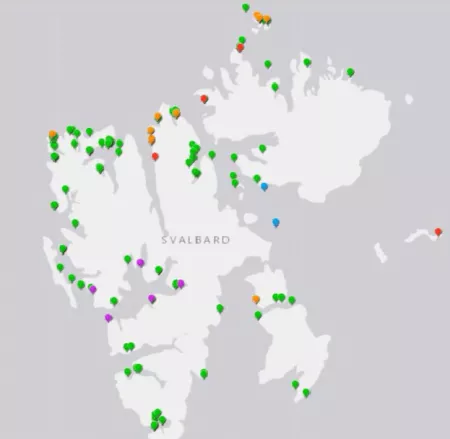
AECO members are currently rethinking their facilities and adapting their products. For example, they are installing water and soap dispensers, providing reusable products, like water bottles, removing single-use items and requiring products from suppliers to come in different packaging. The main challenges faced by member ships included a lack onboard storage space, availability of alternative goods in ports, and cost of alternative products and facilities. AECO began working with members to address these challenges by identifying availability of alternatives for commonly used plastic items and assessing strategies to improve waste reception facilities at relevant ports. As operators evolve their approach to plastic consumption, AECO is currently working to developing a suite of recommendations and best practices to further reduce plastic use on ships. These best practices and innovative solutions could also be applied to other ship-based industries as well as land-based industries, such as hotels. and develop best practices, which will be applicable to a wider audience.
While targeting the ways their members’ ships operate, AECO also focused on influencing the tourists who were traveling with them to reduce plastics coming into the region and onto the ships. In May of 2019, AECO launched its "Clean Seas Guidelines for Visitors to the Arctic." The guidelines provide travelers with information on responsible solutions for reducing their waste and plastic footprint before, during and after their trip. The guidelines were developed in collaboration with AECO’s sister organization, the International Association of Antarctica Tour Operators
(IAATO), who created equivalent guidelines targeted at visitors to Antarctica. The guidelines include recommendations to travelers packing reusable items such as water bottle and reusable cutlery, discouraging throwing any non-organic items in the toilet and ensuring all belongings are well secured when ashore or on deck. Now travelers who are coming to the Arctic with an AECO member expedition vessel are given these guidelines before coming, so they can preemptively plan for a reduced plastics vacation.
In addition to developing best practices for their members’ fleets to reduce their plastic waste, they are also finding ways enhance cleanup efforts of Arctic beaches by engaging tourists in cleaning up plastic pollution. In cooperation with the Governor of Svalbard, AECO-members have joined the Clean Up Svalbard Project. When AECO members bring passengers ashore to get closer experiences of fauna, flora and geological formations they now have the additional opportunity to make a difference by participating in a beach clean-up, which, gives their trip a different meaning. AECO has published Clean Up Svalbard Guidelines, which include information on how visitors can contribute and participate in cleanup activities.
AECO collects information about cleanup activities, including the location and amount of waste, and inputs this data into the Clean Up Svalbard report form, which has allowed for increased data on the origin, composition and distribution of plastic pollution found on Svalbard beaches. Engaging visitors in citizen science activities to improve understanding of the plastic pollution problem. The Governor of Svalbard supports the safe disposal of plastic waste collected, which is crucial to the success of the Clean Up Svalbard Project. AECO also participates in research efforts like the SALT Deep Dive Workshops and Akvaplan-niva MALINOR Project, both of which strive to map marine litter locations as well as types and engage tourists in citizen science efforts to combat plastic pollution. These efforts also have support that makes participation by AECO members possible. Supporting partnerships like this will be critical to scaling similar efforts.
The Clean Seas Guidelines and other educational materials that have been developed by AECO can be used outside of the expedition cruise industry, but they aren’t being used yet. The challenges expedition vessels face are similar to those faced by larger cruise operators as they begin to expand their services in the region. Sharing of best practices and lists of alternative products (which AECO is currently developing) could help the increasing tourism industry in the Arctic engage in more sustainable visits. Cleanup efforts can also be scaled up with the support and partnership of local government. As the tourism industry in the Arctic grows, and more cruise ships enter the region, having sustainable practices will be critical to maintaining the Arctic ecosystems that attract visitors. AECO’s work has begun to establish practices that reduce plastic pollution, how to scale these efforts remains that opportunity and the challenge.
Balton, David, Brittany Janis, Halla Hrund Logadóttir, Marisol Maddox and Fran Ulmer. “Policy and Action on Plastic in the Arctic Ocean: October 2019 Workshop Summary & Recommendations.” Belfer Center for Science and International Affairs, Harvard Kennedy School, April 2020
- Thomas, Desmond, “The Caribbean Tourism Industry in the 21st Century: An Assessment”, Kimberly Green Latin American and Caribbean Center, Florida International University, Working Paper No. 3/2015, https://lacc.fiu.edu/research/publications/lacc-working-paper-series/tourism-caribbean-desmond-thomas-wp3-1.pdf
- “The Caribbean addresses the scourge of plastic pollution”, UN Environment Programme, June 19, 2019, https://www.unenvironment.org/news-and-stories/story/caribbean-addresses-scourge-plastic-pollution
- “Solid Waste and Marine Litter — Caribbean Environment Programme.” http://cep.unep.org/publications-and-resources/marine-and-coastal-issues-links/solid-waste-and-marine-litter
- Corbin, Chris, Sanya Wedemier-Graham and Emily Franc, “Regional Action Plan on Marine Litter Management (RAPMaLi) For the Wider Caribbean Region 2014”, UN Environment Programme, November 2014, https://www.cbd.int/doc/meetings/mar/mcbem-2014-03/other/mcbem-201403-115-en.pdf
- Corbin, Chris, Sanya Wedemier-Graham and Emily Franc, “Regional Action Plan on Marine Litter
Management (RAPMaLi) For the Wider Caribbean Region 2014,” UN Environment Programme,
November 2014, https://www.cbd.int/doc/meetings/mar/mcbem-2014-03/other/mcbem-2014-
03-115-en.pdf - Clean Seas: Turn the Tide on Plastic, “About”, https://www.cleanseas.org/about
- The Caribbean addresses the scourge of plastic pollution”, UN Environment Programme,
June 19, 2019, https://www.unenvironment.org/news-and-stories/story/caribbean-addresses-
scourge-plastic-pollution - Jose Manuel Moller”, 2014, https://www.ashoka.org/en-us/fellow/jose-manuel-moller
- Peters, Adele, “This startup is ditching plastic waste by bringing the refills to you”, Fast Company,
October 14, 2019, https://www.fastcompany.com/90416401/this-startup-is-ditching-plasticwaste-
by-bringing-the-refills-to-you - Closed Loop Partners Invests in Algramo to Advance Affordable, Reusable Packaging Systems”,
October 14, 2019, https://www.closedlooppartners.com/closed-loop-partners-invests-in-algramo-
to-advance-affordable-reusable-packaging-systems/ - Perella, Maxine, “Chilean Startup Eliminating Packaging Waste, ‘Poverty Tax’ in Latin American
Product Market”, Sustainable Brands, October 29, 2019, https://sustainablebrands.com/read/defining-the-next-economy/chilean-startup-eliminating-packaging-waste-poverty-tax-in-latin-american-product-market - Geyer, Roland, et al. “Production, Use, and Fate of All Plastics Ever Made.” Science Advances, vol. 3, no. 7, July 2017, p. e1700782. advances.sciencemag.org, doi:10.1126/sciadv.1700782.
- No author listed. Waste Management—National Reports: Iceland. UN Sustainable Development,
https://sustainabledevelopment.un.org/content/documents/dsd/dsd_aofw_ni/ni_pdfs/National-Reports/iceland/waste.pdf - United Nations Environment Program, and Food and Agriculture Organization of the United
Nations. Abandoned, Lost, or Otherwise Discarded Fishing Gear. http://www.fao.org/fileadmin/user_upload/newsroom/docs/Ghost_fishing_report.pdf - Mengo, Elena, and Centre for Environment, Fisheries & Aquaculture Science. A Review of Marine
Litter Management Practices for the Fishing Industry in the North-East Atlantic Area: Report for
OSPAR Action 36: To Develop Best Practices in the Fishing Industry. 2017. - “AECO to Combat Marine Plastic Litter,” Association of Arctic Cruise Operators, April 23, 2018,
https://www.aeco.no/2018/04/aeco-to-combat-marine-plastic-litter/ “Arctic Cruise with Less Plastic and More Beach Clean-ups”, Association of Arctic Cruise Operators, July 9, 2018, https://www.aeco.no/2018/07/arctic-cruise-with-less-plastic-and-more-beach-cleanups/







